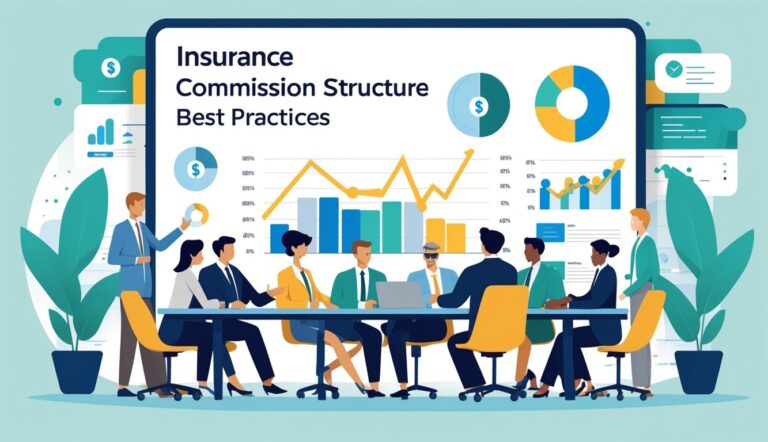Understanding Depreciation
Depreciation is an expense that reflects the wear and tear of tangible assets over time.
In the insurance industry, understanding how depreciation impacts your assets is crucial.
Types of Depreciable Assets:
- Office Furniture: Desks, chairs, and file cabinets wear down with use.
- Equipment: Computers, printers, and other office tools.
- Vehicles: Company cars and trucks.
- Property: Buildings and other real estate.
Depreciation Methods:
- Straight-Line Method: A fixed amount of depreciation each year.
- Double Declining Balance: Accelerated depreciation in the early years.
- Units of Production: Based on asset usage.
Key Concepts:
- Useful Life: The period an asset is expected to be usable.
- Salvage Value: The estimated value at the end of its useful life.
- Book Value: The asset’s value on the balance sheet.
- Matching Principle: Expenses are matched with the revenue they help to generate.
Accounting and Tax Implications:
Depreciation reduces taxable income, impacting your net income.
The IRS provides guidelines in Publication 946 on how to depreciate assets for tax purposes.
Depreciation Schedule:
A depreciation schedule outlines the depreciation of assets over time.
This helps in planning for future financial statements and ensuring your profitability.
Considerations:
- Assumptions: Lifespan, market value, and maintenance.
- Recapture: Any gain if the asset is sold for more than its depreciated book value.
- Obsolescence: Technological advancements can shorten the useful life.
By properly accounting for depreciation, you can better manage the value of your fixed assets and prepare accurate financial reports.
Depreciation Methods and Calculations
Depreciation methods in the insurance industry help allocate the cost of assets over their useful lives.
Understanding these methods is crucial for accurate financial reporting and tax purposes.
Straight-Line Depreciation
The straight-line method is the simplest and most commonly used.
Using this method, the asset’s cost is spread evenly across its useful life.
The formula is:
[ text{Depreciation Expense} = frac{text{Cost of the Asset} – text{Salvage Value}}{text{Useful Life}} ]
For example, if a vehicle costs $260,000, has a salvage value of $20,000, and a useful life of 8 years, the annual depreciation expense would be:
[ frac{260,000 – 20,000}{8} = 30,000 ]
This method is widely accepted under GAAP.
Accelerated Depreciation
Accelerated depreciation methods recognize higher depreciation expenses in the earlier years of an asset’s life.
The most common form is the double-declining balance method.
It uses double the rate of the straight-line method applied to the remaining book value.
The formula is:
[ text{Depreciation Expense} = 2 times text{Straight-line Rate} times text{Book Value at Beginning of Year} ]
Using this method, assets depreciate faster initially, which can be beneficial for tax purposes.
Another variant is the MACRS used for tax purposes in the U.S., offering even faster depreciation.
Units of Production Depreciation
Units of production depreciation ties the depreciation expense directly to the usage of the asset.
The formula is:
[ text{Depreciation Expense} = frac{text{Cost of Asset} – text{Salvage Value}}{text{Total Estimated Production}} times text{Actual Production} ]
For instance, if an asset costs $25,000, has a salvage value of $500, and an estimated life of 50,000 units, the expense per unit is:
[ frac{25,000 – 500}{50,000} = 0.49 text{ per unit} ]
This method is perfect for assets where wear and tear depend on usage rather than time.
Understanding these depreciation methods helps ensure proper accounting and tax preparedness, impacting your financial statements and balance sheet.
Implications of Depreciation

Depreciation impacts your insurance business in several ways.
For tax purposes, understanding how to depreciate your tangible assets like office buildings, vehicles, and equipment can be crucial.
Depreciation methods can affect your taxable income and the timing of expenses.
With capital expenditures on assets such as advanced computer systems or new property, you’ll need to account for the expense gradually.
This allows you to match the cost with the revenue generated over the asset’s useful life.
Cash Flow and Profit
While depreciation is a non-cash expense, it affects your cash flow.
Reduced tax payments result from depreciating assets, which improves net income.
If you’re using an accelerated depreciation method, you’ll see greater reductions in the early years.
Insurance companies heavily invest in real estate and tangible assets.
The depreciation of these assets can lead to recorded losses that impact your financial statements.
However, this doesn’t necessarily reflect your actual cash position.
Obsolescence and Scrap Value
As technology advances, older equipment and software can become obsolete.
This leads to higher depreciation rates over shorter periods.
Consider the scrap value of assets used in production when determining their depreciation rate. Obsolescence directly influences this calculation, impacting your balance sheet.
Tracking and Reporting
Accurate reporting is mandatory.
Use form 4562 to report asset depreciation to the IRS.
Consistent tracking ensures compliance and helps in effective asset management. Fixed asset tracking assists in maximizing the efficiency of asset use, improving overall net income.
Leveraging Depreciation
Strategically managing depreciation can optimize taxable income.
Choosing the right method and keeping thorough records supports your financial strategies.
For example, using accelerated methods like double declining balance can provide a tax shield during critical business phases.
For further reading, see the discussions on how depreciation affects cash flow and tax implications of different depreciation methods.
Frequently Asked Questions

Depreciation is a key concept in accounting and tax that helps businesses manage their financial statements and deductions.
How is depreciation calculated in accounting?
Depreciation is typically calculated by dividing the cost of an asset by its useful life.
There are different methods to do this, depending on how the asset is expected to be used over time.
What are the different methods of depreciation?
Common methods include Straight-Line Depreciation and Declining Balance.
Straight-Line spreads the cost evenly, while Declining Balance applies a higher expense in the initial years.
Can you provide an example of how to calculate depreciation value?
For example, if you purchase a machine for $15,000, using Straight-Line Depreciation over 5 years, the annual depreciation expense would be $3,000.
What is a depreciation schedule and how is it used?
A depreciation schedule details the depreciation expense for each year of an asset’s life.
It’s used to track and report financials accurately schedule.
How does depreciation affect tax deductions?
Depreciation allows businesses to deduct a portion of an asset’s cost each year, reducing taxable income.
Different methods can affect the timing and amount of these deductions.
What is the role of depreciation in economics?
Depreciation reflects the decline in value of assets over time, helping to measure capital consumption and investment in economic analysis.






